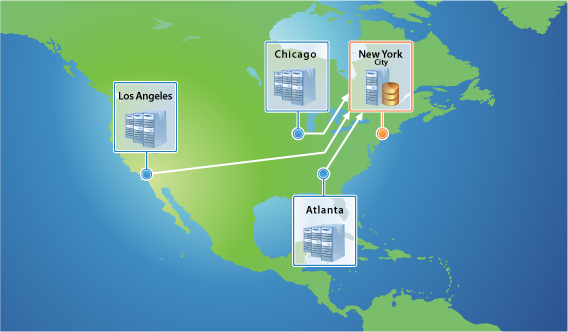Logged In User Details
|
Must be a member of the Reporter_Discovery_Admins group in order to log in to the console. Configuration Manager will send configuration and set up requests to the server. |
Configuration is dependent on your deployment’s security group setup. See the System | Information page to determine the type of security in place. For more information, see Configuring the Database and Security Groups. | ||
|
All domains with which the credentials have a forest or domain level trust will be enumerated. |
Server Service Credential Details
Setting Up Your First Collection Computers
Configuring Clusters and Nodes for Effective Data Collection
Figure 4 outlines a three cluster implementation of Enterprise Reporter. The server and database are located in New York, with clusters in three other cities. Each cluster contains 3 nodes.

